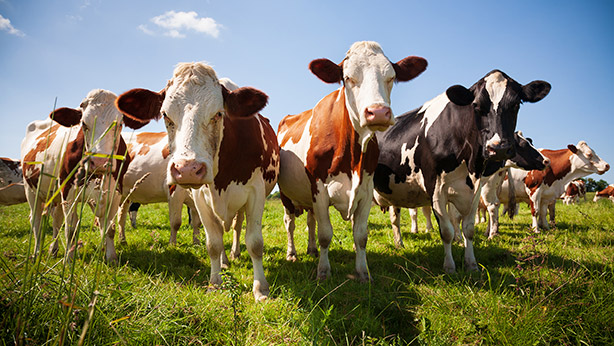Beef price falls to 480p/kg but scope for summer surge
 © Adobe Stock
© Adobe Stock Cattle rearers have been feeling the pinch as a result of falling beef prices, with ample supplies of stock coming forward, putting pressure on the trade.
GB prime cattle started 2024 at a 40p/kg premium on 2023 levels, but after several months of steady declines, prices are now almost 10p/kg below last year’s levels, with finished heifers averaging 480.5p/kg deadweight.
High costs of production on farms and a longer housed overwintering period due to the wet spring, combined with lower finished prices, have squeezed returns for producers.
The store cattle trade has also eased slightly as a result of the tempered finished market.
See also: Industry change and costs limit demand for beef outfits
Summer demand
Buying groups are saying there’s plenty of cattle about, which is comfortably filling demand at present.
However, they are suggesting that with consumer demand starting to pick up and cattle numbers likely to become tighter, prices could strengthen during the summer months.
Tom Dracup, lead red meat analyst at AHDB, said the trade at wholesale markets had reported some strength in key categories such as steak and trim, as seasonal demand continues to have a bearing on the marketplace.
Last week, ABP announced the completion of £24.5m investment in its beef processing facility in Perth, which could add some more competition to the Scottish beef sector.
Meanwhile, on the Continent, EU beef production is forecast to decline by 2.3% during 2024, providing an additional valuable market for UK beef exports.
The numbers
- 15.2p/kg Fall in average deadweight steer price since 1 March
- 3.4% Annual increase in UK beef production during first four months of 2024
- £2.24bn Turnover at auction markets in England and Wales in 2023 (LAA)
Ireland
The beef trade in Ireland has bucked the wider trend, with Irish base prices increasing in the last week to €5.10/kg (434p/kg) for steers and €5.15/kg (438p/kg) for heifers.
Irish Farmers Association livestock chair, Declan Hanrahan, said buyers have been instructed this week to “leave no cattle behind” as the anticipated tightening of numbers of suitably fleshed cattle starts to materialise, leaving processors struggling to fill lucrative contracts.
Mr Hanrahan suggested that demand could increase further in the coming months, boosted by the seasonal demand and the Euro football championships.
He added that, based on Bord Bia projections, there will be 70,000 fewer cattle between now and the end of the year available to processors, with supplies also predicted to be tight in the UK and EU markets over the coming months.
Auction market throughputs
Higher finished prices for cattle and sheep throughout 2023 pushed up the total value of stock sold at livestock marts.
Turnover at auction markets in England and Wales increased by £115m to total £2.24bn in 2023, according to figures by the Livestock Auctioneers Association (LAA).
More than 756,000 store and breeding cattle, 251,000 calves and 261,000 finished cattle were sold through livestock markets in England and Wales last year.
A total of 2.94m store and breeding sheep, and 6.66m finished sheep also went under the hammer.
LAA development officer Zanna Dennis said: “A key pull-out from the latest figures is the increase in the value of stock, with a rise in every category bar cull ewes.
“What has also been equally significant is, despite the national herd and flock decreasing, we are actually seeing more through the live ring.”
